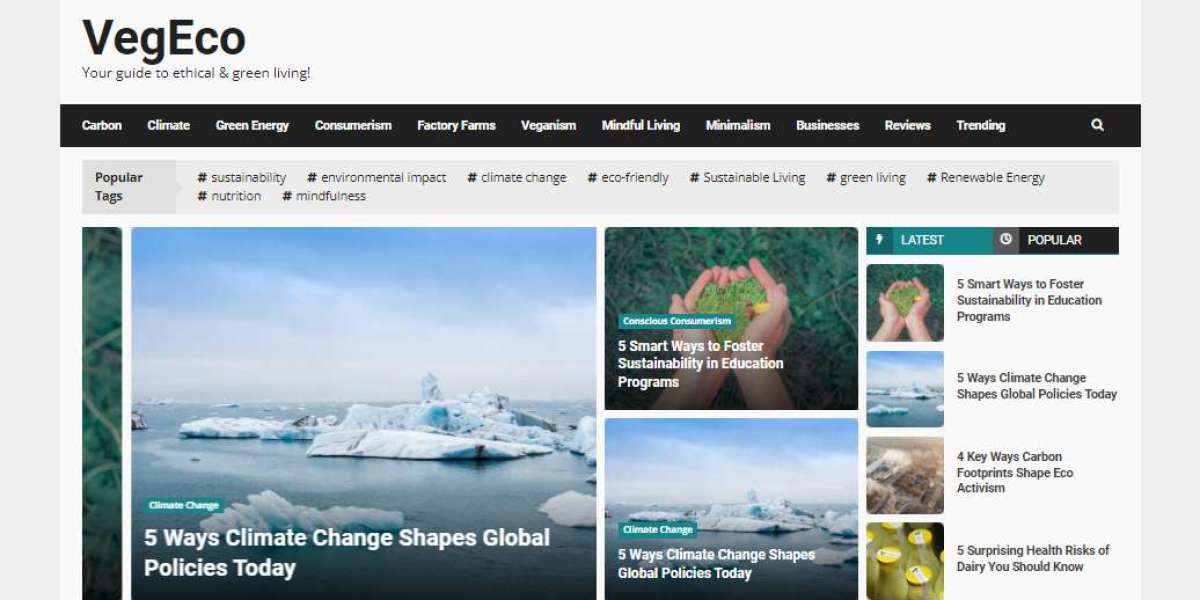Sustainable living has become an essential concept in our fight to preserve the environment and mitigate the harmful impacts of human activity. It encompasses a wide range of practices that aim to reduce waste, conserve resources, and protect biodiversity. Let’s explore some key elements of sustainable living and how they contribute to a greener, more eco-friendly future.
Green Energy and Clean Technology
One of the cornerstones of sustainable living is the shift towards green energy sources, such as solar, wind, and hydropower. These renewable resources are essential in reducing our reliance on fossil fuels, which contribute significantly to pollution and global warming. By transitioning to clean energy, we can drastically lower our carbon footprint and slow the pace of climate change.
Eco-Friendly Practices
Sustainable living also includes everyday eco-friendly practices, such as recycling and adopting a zero waste lifestyle. Recycling helps minimize the need for raw materials, conserving both energy and natural resources. A zero-waste approach encourages individuals and businesses to reduce, reuse, and recycle as much as possible, thus contributing to lower pollution levels and a healthier environment.
Conservation and Preservation
Conservation plays a crucial role in sustainable living, particularly in protecting our ecosystems and the biodiversity within them. Wildlife preservation, rainforest conservation, and ocean conservation are vital to maintaining the delicate balance of nature. When ecosystems are disrupted—through deforestation, pollution, or habitat destruction—the consequences ripple across the planet, affecting everything from animal populations to weather patterns.
Ethical Consumption and Sustainable Fashion
Choosing ethical consumption is another critical aspect of sustainability. This involves being mindful of the products we buy, supporting cruelty-free and eco-friendly products, and opting for sustainable fashion. Ethical fashion brands prioritize environmentally friendly materials and production methods, reducing waste and the environmental impact of clothing production. Similarly, ethical farming and sustainable agriculture promote practices that protect the land, conserve water, and treat farm animals with respect.
The Vegan Movement
The rise of veganism and plant-based diets is intrinsically linked to sustainable living. Shifting to a vegan lifestyle helps reduce the strain on the planet's resources, as animal agriculture is a significant contributor to greenhouse gas emissions, deforestation, and water consumption. In addition to promoting better animal welfare and farm animal advocacy, veganism supports efforts toward animal liberation and a more eco-conscious society.
Wildlife Protection and Animal Rights
Protecting wildlife is essential for maintaining biodiversity and ecosystem health. Wildlife sanctuaries, habitat protection, and species conservation efforts all aim to prevent species extinction and protect endangered animals. Advocating for animal rights ensures that all living creatures are treated with respect and compassion, aligning with the broader goals of sustainable living.
Climate Action and Sustainable Communities
Climate action refers to the efforts individuals, communities, and governments take to combat climate change. This can include everything from adopting renewable energy sources to supporting environmental activism and sustainable development. Sustainable communities aim to live in harmony with nature by utilizing local resources efficiently, reducing pollution, and encouraging a green living ethos that prioritizes environmental health.
Water Conservation and Ocean Health
Water is a finite resource, and water conservation is crucial for ensuring its availability for future generations. Mismanagement of water resources contributes to shortages, pollution, and harm to aquatic ecosystems. Efforts to protect oceans and marine life are equally important, as the oceans play a pivotal role in regulating the Earth's climate and supporting biodiversity. Preventing pollution and overfishing ensures the long-term health of marine ecosystems.
Conclusion
Sustainable living is a holistic approach that embraces everything from individual actions like recycling and adopting a plant-based diet to global efforts in clean energy and biodiversity conservation. Whether through eco-conscious choices in daily life or supporting environmental activism, every action counts. By prioritizing the planet and its inhabitants, we can create a future that thrives on harmony, respect, and sustainable growth.








